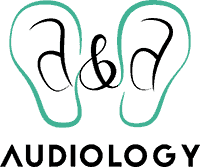- The Connection Between Hearing Loss and Dementia - July 30, 2024
- The Advantages of Rechargeable Hearing Aids - July 16, 2024
- How to Enjoy Music Festivals While Protecting Your Hearing - July 3, 2024
Handing your young child a movie or show on an ipad is a daily experience for most parents. It keeps them quiet and occupied so that you can get a few moments to yourself. Most of us also hand over headphones on road trips or while we’re taking important calls so we can contain the resulting noise of their entertainment.
But do you remember to monitor the volumes they’re exposing their ears to? Children, like adults, can easily be exposed to noises that can harm hearing.
Hearing in young people
It might surprise you to know that children are inherently more sensitive to loud noises than older people are. The ear canals of children and infants are smaller and so the sound pressure is increased versus the larger canals of adults. This means that the noises you hear or the volumes you are exposing yourself to are experienced as louder to the children around you.
That also doesn’t mean that they won’t crank up the volume when they’re left to their devices. Toddlers, for instance, are not exactly known for their acts of self-preservation.
How loud is too loud?
Hearing health professionals recommend being cautious of volumes exceeding 85 decibels — the unit of measurement for sound. To put that into perspective, normal conversation clocks in at about 60 decibels while the sound you’re exposed to when mowing the lawn can reach 90 decibels.
Any noise levels over 85 decibels will begin to increase the risk of hearing damage or hearing loss. The duration of time exposed matters, too. Too-loud noise can cause harm to the sensitive hair cells of the middle ear. They are an extremely important part of the hearing process as they collect sound information from the external world and transmit it to the brain via the auditory nerve. When they are damaged, they do not repair themselves and as these cells decline, the body does not reproduce new ones to replace them. When these hair cells cease to function optimally, less sound information is received in our brain’s processing centers.
We experience this lack of sound information as hearing loss and noise-induced hearing loss is one of the leading causes people experience a decline in their hearing health later in life.
Extreme volumes at movie theaters
Treating kids to the latest animated theatrical release is a wonderful adventure. Who doesn’t love an afternoon movie and a bucket of popcorn? But, there is no standard level regulating sound at movie theaters. It’s commonly agreed that movies shown in theaters today are louder than in previous years. This is due to prioritizing better sound systems and the transition from analog to digital sound. While analog sound at high volumes fuzzes out, digital sound retains its crispness even at extremely loud levels and so the volume knob keeps getting dialed up.
A 2010 study of noise levels in movie theaters registered peak volumes of 139 decibels. The audience would have felt the pain of such extreme noise. Sounds between 120-130 decibels won’t just harm hearing, they will also result in a physically painful experience for most people.
Ways to protect children’s hearing
If you’re taking your children to a theater regularly, you can measure the sound yourself. Download an app like Decibel X so that you can easily take the measurements of the sound environments you find yourself in. It won’t be a scientifically precise measurement, but you will get a fairly accurate estimate. If the theater regularly plays kids’ movies at dangerously loud levels, speak to the management or consider visiting another theater instead.
On an iPad or smartphone, limit the maximum volume to a level chosen by you. Go to the settings app and choose music (it will also limit the volumes when other media is played). Go to volume control and turn it on. Then, choose the level of sound you pick to act as the maximum. A good rule of thumb is to never listen to your devices louder than two-thirds of the factory setting maximum volume.
Be a good hearing health model
One of the best ways to instill healthy listening habits in your children is by modeling good examples for them with your behavior. Pay attention to the volume levels you choose for yourself and have conversations about why this is important for our hearing health. Schedule regular hearing exams and explain to your children that hearing is an important aspect of vibrant life. They’ll learn to value and protect their own healthy hearing because of your responsible behaviors!

